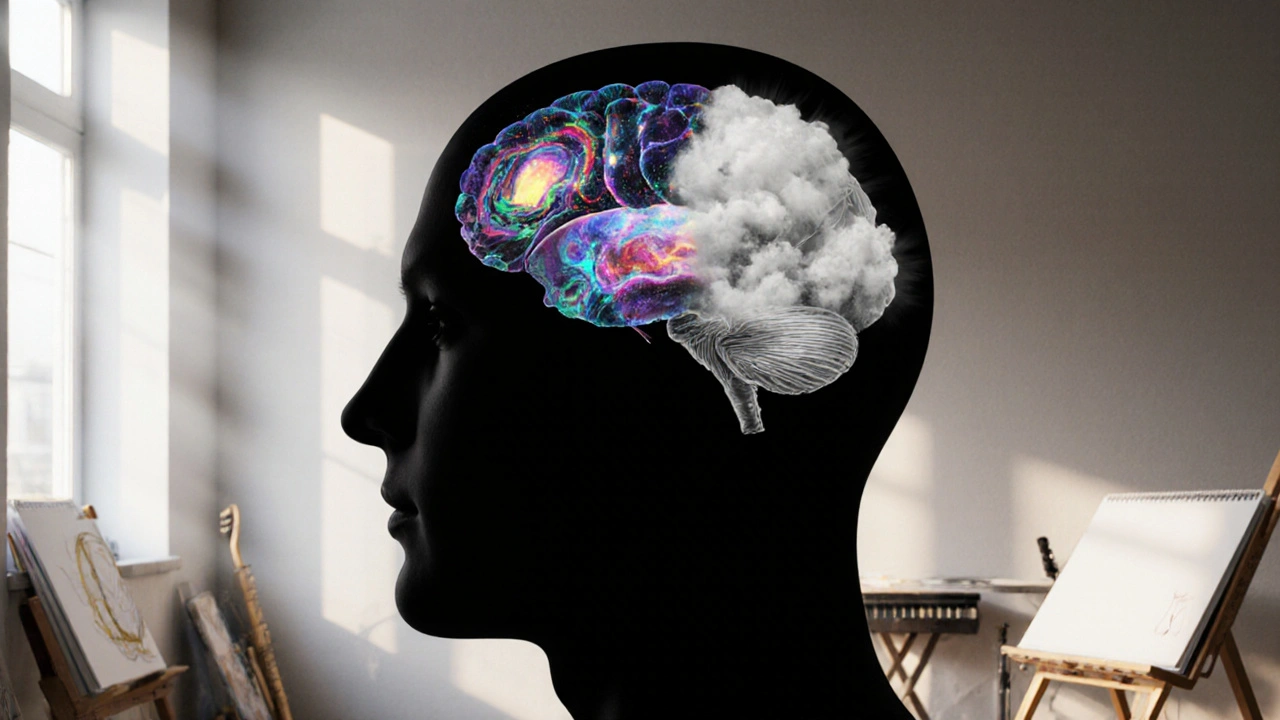Creative Process and Mental Health: Simple Ways to Boost Your Well‑Being
Ever notice how doodling a sketch or humming a tune can melt away a hectic day? That’s not magic – it’s your brain reacting to creative flow. When you let ideas move freely, stress hormones drop and feel‑good chemicals rise. Below you’ll find real‑world steps to turn that fleeting spark into a daily habit that supports your mental health.
Why Creativity Helps Your Brain
Creative tasks activate both the logical left side and the imaginative right side of the brain. This back‑and‑forth wiring improves problem‑solving and cuts rumination. Studies on art therapy show lower anxiety scores after just a few sessions, and music‑making has been linked to better mood regulation. The key is the sense of control: you choose the colors, the notes, the words – and that choice counters the helpless feeling that fuels stress.
Another big win is the “flow” state. When you’re fully absorbed in a project, time slips away and the brain releases dopamine, the same reward chemical you get from exercise or a good laugh. Flow moments act like mini‑resets for the nervous system, giving you a break from nonstop worry.
Simple Ways to Add Creative Flow to Your Day
1. Start with a 5‑minute sketch. Grab a pen and a scrap of paper. Don’t aim for perfection – just draw what’s on your mind. Even scribbles count as creative output and signal your brain to shift gears.
2. Use music as a mood tool. Create a short playlist for different times of day: calm acoustic for mornings, upbeat beats for workouts, soothing ambient for evenings. Play it while you work or relax; the rhythm will guide your emotional state.
3. Write a quick journal prompt. Answer questions like “What made me smile today?” or “What would I create if I had no limits?” Writing forces you to process feelings and can uncover hidden stressors.
4. Try a micro‑art therapy session. Pick a simple craft – origami, clay, coloring – and set a timer for ten minutes. Focus on the texture and movement rather than the final product.
5. Blend mindfulness with creation. Before you start, take three deep breaths, notice the sensations in your hands, and then dive into the activity. This tiny mindfulness step keeps you present and amplifies the mental‑health benefits.
Consistency beats intensity. Aim for a brief creative habit each day rather than a marathon once a week. Over time you’ll notice sharper focus, fewer mood swings, and a stronger sense of personal agency.
If you want extra support, look for local creative arts therapy groups or online workshops. Many community centers offer free sessions, and reputable websites list qualified therapists who specialize in art, music, dance, or drama therapy.
Bottom line: creativity isn’t just a hobby; it’s a practical mental‑health tool. By carving out a few minutes for drawing, music, or writing, you give your brain a chance to reset, refocus, and recover from stress. Try one of the tips above today and watch how a little imagination can lift your mood and sharpen your mind.

